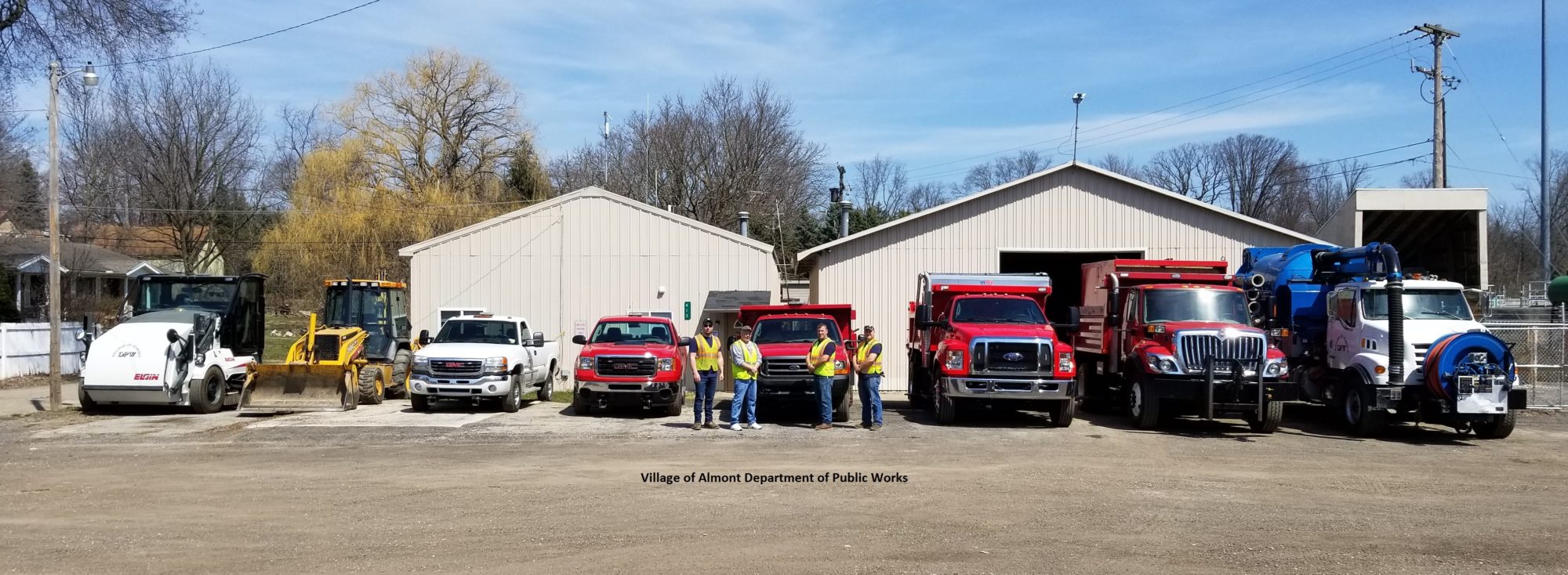
Mission Statement
The primary function of the Almont Department of Public Works is to provide its residents with high quality municipal services. These services include snow and ice removal, storm water drainage, water supply and distribution, maintenance to the sewer main, vehicle fleet maintenance, maintenance and improvements of roads and public property, maintenance to the Village/Township Office grounds, maintenance to the Almont Community Park grounds and maintenance to all water and sewer facilities.
We are committed to distributing safe drinking water and protecting our water system from contamination. We strive to provide all services in a prompt, courteous and professional manner.
Non-Emergency After Hour - Water & Sewer Requests
The Village of Almont Department of Public Works will no longer schedule NON-EMERGENCY after-hour water requests such as having the water shut off or turned on for what is considered a non-village repair.
Please note, normal business hours are 7:00 am through 3:00 pm, Monday through Friday. Please call the Village Office (810) 798-8528 to schedule an appointment with the DPW. We prefer that all appoints are scheduled before 2:30 p.m. and require a 24-48 hour notice for scheduling purposes. The Village Office is closed on Friday so any appointments must be made in advance.
For all after-hour water and/or sewer emergencies, please call Lapeer Central Dispatch at (810) 667-0292.
If you contact the DPW after normal business hours for an emergency and it is determined that this was a non-emergency or that it was not due to a main backup, you may be charged the DPW (Non-emergency) After Hours Fee per our fee schedule.
Documents
-
Water & Sewer (6)
-
pdf
-
pdf
-
pdf
-
pdf
-
pdf
-
pdf
- Common Questions (5)
-
pdf
-
pdf
-
pdf
-
pdf
-
pdf
-
- Water Quality Reports (10)
-
pdf
-
pdf
-
pdf
-
pdf
-
pdf
-
pdf
-
pdf
-
pdf
-
pdf
-
pdf
-
- GLWA (8)
-
html
-
pdf
-
pdf
-
pdf
-
pdf
-
pdf
-
pdf
-
pdf
-
-
-
Department of Public Works (4)
-
pdf
-
pdf
-
pdf
-
pdf
-
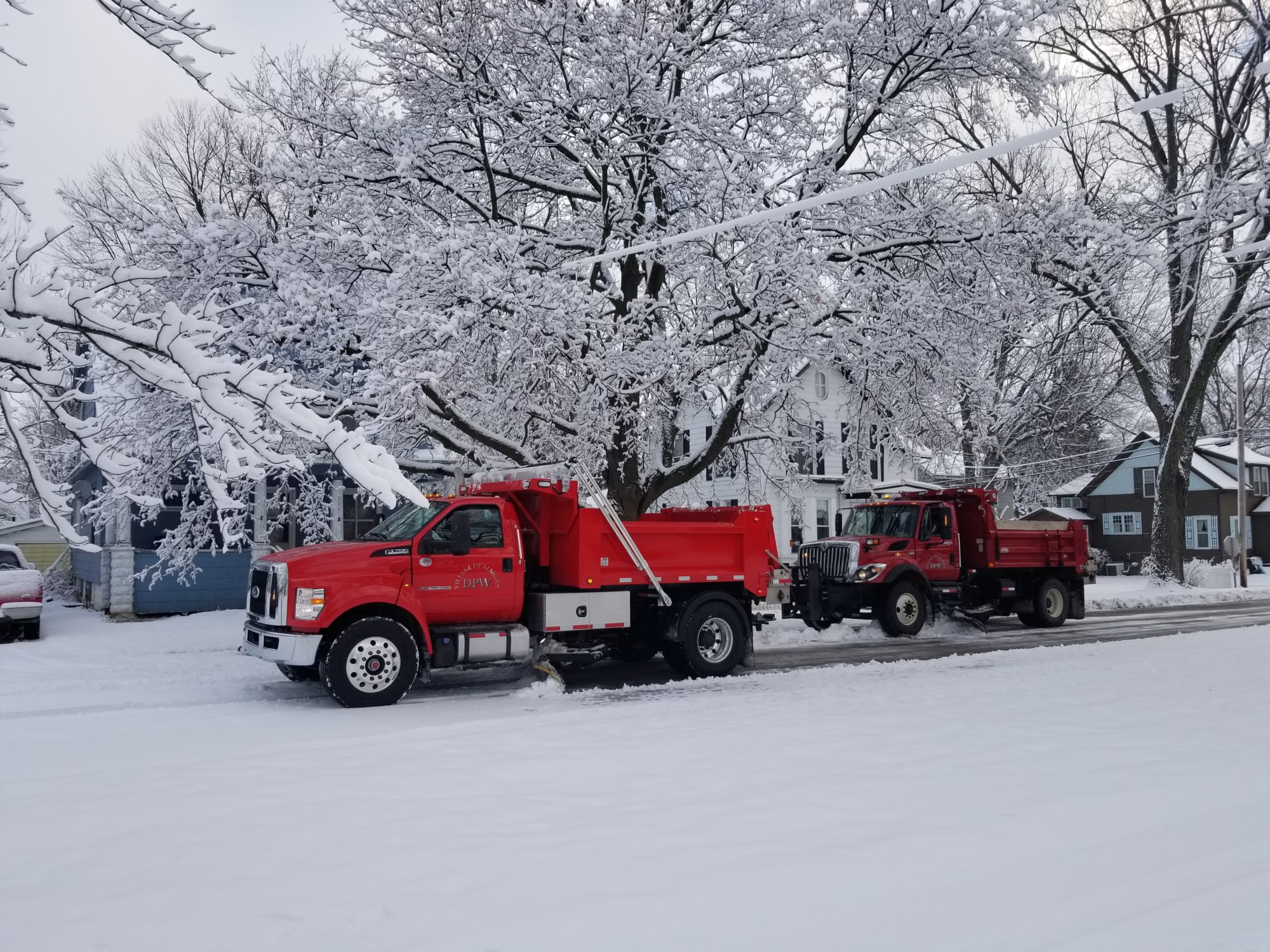
Winter Maintenance Policy
Please be aware it is actually illegal under Michigan law (section 257.677(a) of the Michigan Vehicle Code) to shovel or plow snow or ice onto any road or highway, or to deposit snow on a road or road shoulder in such a way that it blocks motorists' views of traffic.
To view the Almont Department of Public Works Winter Maintenance policy, please read the Village of Almont Winter Maintenance pdf above.
No vehicle shall be parked on any public street within the Village between the hours of 3:00 a.m. and 6:00 a.m. per Village Ordinance 125.2.
Brush Pick-Up
Tree limbs between 1 inch and up to 4 inches in diameter will be chipped by the Village DPW on the 1st and 3rd Monday of the month from April through October. Branches can be placed out in full length with the cut ends facing the street stacked neatly. All brush with roots must be free of dirt and stones. The Village will not pick up whole tree cuttings. The Village is not responsible for large amounts of brush from tree trimming, tree removal, or clearing of property. The DPW or OEO may tag your property if an excessive amount of brush is left at the road for DPW to chip. Property owners should contact a tree service for excessive brush removal.
The Village DPW picks up leaves raked to the curb ONLY IN THE FALL. The last day for leaves will be The Monday before Thanksgiving or the first snow, whichever comes first.
Any questions please contact the Village office at : 810-798-8528
Potential Dangers of Autumn Leaves
Wet leaves on the road surface can make stopping difficult, and piles of leaves can obscure potholes, curbs, and street markings. Please do not rake or pile your leaves onto the roadway. Pile them neatly at the curb for DPW to remove. It is especially dangerous if we get an early snow before leaves can be removed.
Debris blown into our roadways can also clog our storm drains.
In the past, it has been our policy to extend the courtesy of leaf pick-up to the business' located within the Village of Almont, We regret to inform you that our policy changed in 2017. Business' will be excluded from any leaf or yard waste pick-up. You will need to contact either your contracted garbage provider or your lawn service for these services. This letter was mailed to all business' on November 29, 2016.
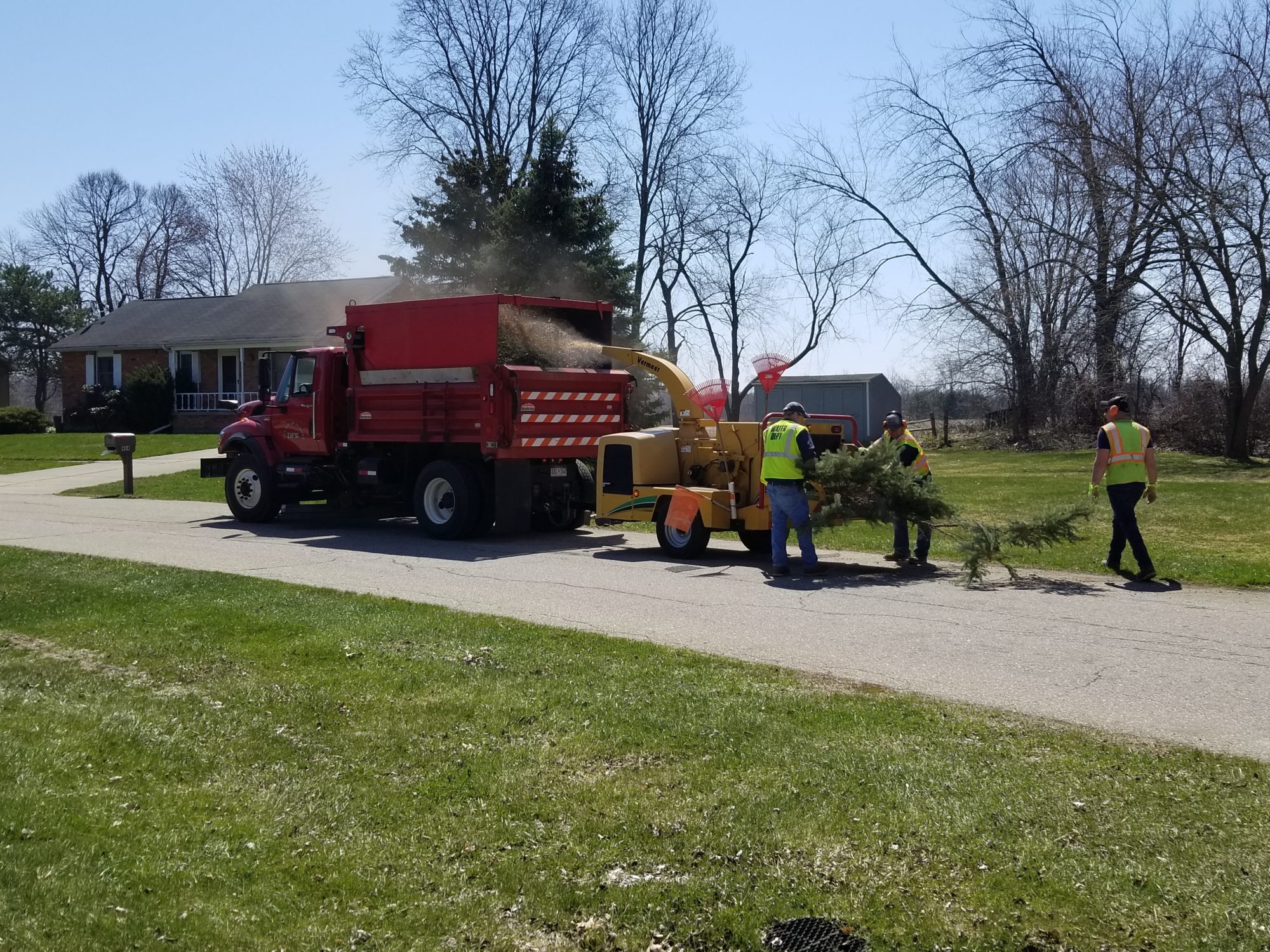
How can you help?
- Only place your leaves at the curb (not in the roadway). Residents will be notified to remove their leaves from the roadway.
- If you know there will be a storm or possibly an early snow: bag your leaves for Emterra to remove on scheduled garbage days. Wet heavy leaves are a potential danger and difficult for our machinery to remove. DPW has a limited number of trucks and the same trucks are used for leaf removal as well as snow plowing. Once the snow starts falling they are unable to easily convert their trucks back for leaf removal and snow removal takes precedence.
- Leaf removal ends on the Monday before Thanksgiving or the first snow whichever comes first for DPW.
- Leaf pickup ends on the last garbage day in November for Emterra.
What Happens to Leaves & Yard Clippings Blown into the Street
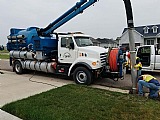
Our DPW works hard to keep our storm drains clear of debris. Did you know that blowing yard waste including grass clippings onto the street can not only clog our storm drains, but it can be harmful to our waterways. Please click Leaves and Grass Clippings in the Street pdf for more information.
Village Generators
The backup generators at the water booster station and the sanitary lift stations are maintenanced every year so that if there are power outages, waste water and drinking water operations continue with very little disruption.
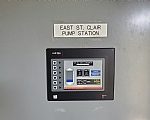
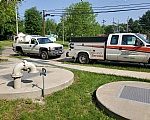
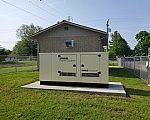
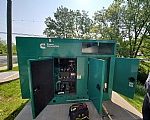
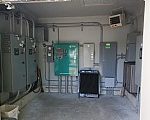
Right of Way
Permit
Any time you are doing work in the Village of Almont's Right of Way, a permit is required. You can mail in a completed application along with payment and a $2500.00 surety bond or submit in person at our office.
Any applications that are not filled out completely, do not have payment or do not have the required surety bond will not be processed and will be returned to the applicant as denied.
Sewer Backups
and Basement Flooding
If you are experiencing either a sewer backup or if your basement is flooding, read DPW Flyer on Sewer Backups pdf to find out if you should call a plumber or the DPW. These documents are located in the document section above.
How GWLA Sets Water and Sewer Rates
Visit "How GWLA Sets Water Sewer Charges" in the GLWA folder.
Protecting our Sanitary Sewer System
Downspout Disconnect Awareness Program
It is against our Village Ordinance to have downspouts and/or sump pumps discharge into the sanitary sewer. See Village Ordinance 150 7.5. If you need information on how to disconnect your downspouts, read our pdf - Downspout Disconnect Awareness Program.
Disconnecting Sump Pumps from our Sanitary Sewer System
Sump Pumps should not be connected to the sanitary sewer system, or discharge onto your neighbors property. For facts and information regarding sump pump connections, please read the pdf DPW Sump Pumps above.
What Not to Flush
The GLWA offers a series of brochures to educate us on water and waste water systems. To view these brochures, please click on the provided links.
WRAP Program
The Great Lakes Water Authority (GLWA), the regional water authority that includes the City of Detroit, Macomb, Oakland and Wayne counties and the State of Michigan, is offering an assistance program to qualifying low-income retail customers. For more information on the Water Residential Assistance program (WRAP), click on the following link: http://www.waynemetro.org/wrap/
GLWA Service Lines and Plumbing Fixtures
GLWA has published a flyer that responds to frequently asked questions about lead and copper in water. This touches on:
- What is a service line and who is responsible for it?
- How do I determine what material my service line is made of?
- How can I tell if my plumbing fixtures have lead or lead solder in them?
- Do I need to test my water for lead if I have a lead service line or plumbing with lead solder?
- What should I do if my water quality results indicate a presence of lead?
- If corrosion control is working, how can there still be higher levels of lead in the first draw sample in the morning, after water has sat in the pipe?
- How do I flush my service line after it has been replaced?
- Where can I go for help with my home's internal plumbing?
To access the flyer, please click on the pdf in the GLWA folder, GLWA Service Lines and Plumbing Fixtures.